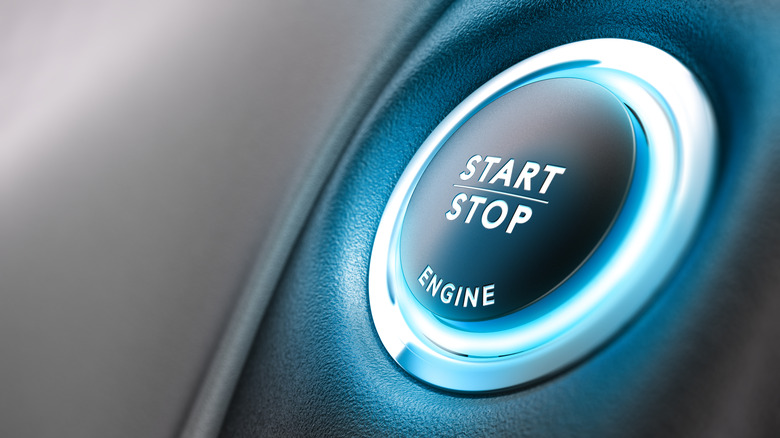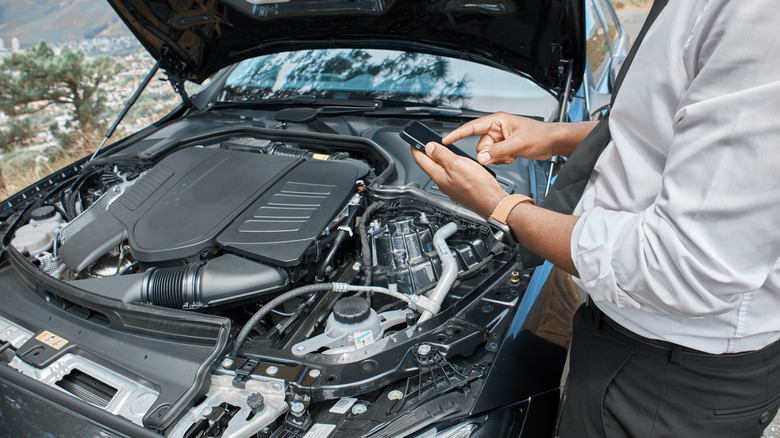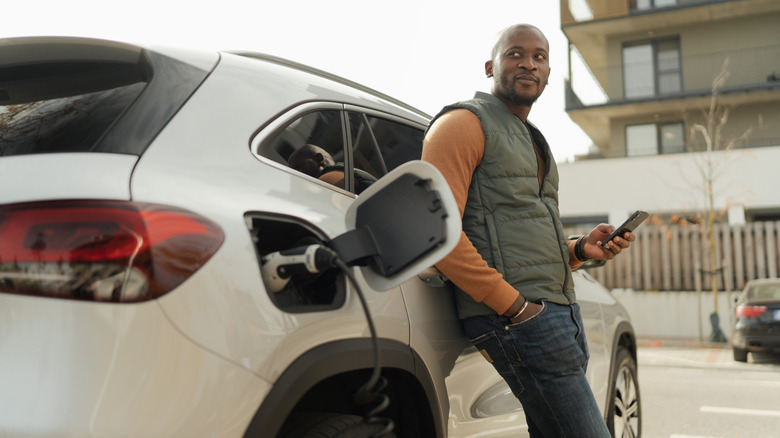Is Using Auto Start-Stop Bad For Your Engine?
An automatic start-stop system in vehicles is known by many names: Some call it a "stop-start," others "S&S," and others a "micro-hybrid technology." But whatever you call it, it's a common feature in modern vehicles that deserves an in-depth understanding. If you're wondering if such a system is bad for your engine, the short answer is no. The long answer, however, requires a review of how this technology works.
An auto start-stop system won't likely cause significant damage to your engine. It's only natural, however that some folks suspect that frequent stopping and starting of the engine could cause wear and tear over time. These skeptics aren't exactly wrong for their suspicions. In fact, frequent stop-start cycles can indeed wear down an engine, but fortunately, engineers have come up with some clever ways to reduce engine wear from these systems.
An auto start-stop system performs as you'd expect from the name. It turns off the engine automatically when the vehicle stops moving and starts it up once the vehicle begins moving again. The point is to help reduce fuel consumption, making it one of the most effective fuel-efficient technologies ever.
So, start-stop systems are a step in the right direction for lowering CO2 emissions. For hybrid and electric vehicles, this can help conserve electrical charge, essentially accomplishing the same thing. Ford introduced the technology to the U.S. in 2012, though Volkswagen brought it to Europe in 1983. Since then, just about every auto manufacturer has incorporated start-stop systems in some capacity. How these manufacturers have addressed the risk of greater engine wear is worth exploring.
How an auto start-stop system works
Automatic start-stop systems are fairly simple in design. They turn off the engine when detecting the vehicle is stopped and turn it back on once the clutch (or accelerator pedal) is re-engaged. The whole point is to reduce CO2 emissions, with some estimates placing the reduction at 3-8%. This not only benefits the environment, but it's also the best counter to unnecessary fuel costs.
The actual technology in play involves an array of sensors connected to the battery, gear system, wheels, and crankshaft (at least on automatic transmissions). These low-tech sensors can coordinate their readings based on the engine's RPM to determine when the vehicle is no longer in motion and the brake is depressed. Once detected, the engine is turned off via the engine control unit (ECU) and electronic battery system (EBS). This is the same electronic circuit that engages the ignition when you turn the car on and off normally. And for starting up again, the reverse applies.
So why do some folks suspect this system could wear down an engine? When the motor is turned on, the motor oil forms a liquid barrier between the bearings and the crankshaft. However, when the vehicle stops, the engine oil settles. Starting the engine again kicks the crankshaft into motion, leading to potential friction with the bearings, at least until the "boundary condition" of the motor oil is reestablished. Such concerns are widespread enough to lead some manufacturers to remove the feature entirely.
Thus, every time an engine starts, it has the potential to create friction between the crankshaft and the bearings. Fortunately, start-stop systems reduce the degree of friction thanks to both the nature of the system and an industry standard technology.
Why start-stop systems don't cause significant wear
The bottom line is that start-stop systems aren't as damaging as cold starts. When motor oil is cold, it's more viscous. During a cold start, the crankshaft has to churn into motion within a film of sluggish, cold motor oil, and it takes a while for a proper boundary condition to be established. Thus, engine wear is most probable when you first turn on the engine.
Automatic start-stop systems, however, operate after the motor oil has been heated. In fact, the start-stop system won't even turn on until the oil has reached a specific operating temperature. Since most start-stop systems usually only stop the engine for a brief period (such as when stopped at a red light), there's little risk the oil will cool.
There are a few other safeguards, too. Many start-stop systems have a timer that stops the crankshaft at the ideal location for a smooth restart. Also, because so many start cycles are expected in these vehicles, most come with extra-robust starters and batteries. The same is true of start-stop electric vehicles, which employ strong starters and batteries to handle so many start cycles. A few manufacturers even circumnavigate the starter entirely, using a combustion system for restarting the engine. Mazda is one example, firing sparks directly within the cylinder during the start-stop operation using its i-stop technology in models like the Mazda6.
If your car doesn't have a start-stop system, however, turning off the engine at every stop light can actually cost more fuel and damage the engine, since such cars aren't equipped with the above-mentioned safeguards. If it does have a start-stop system, there's nothing to worry about. And if you don't like it, you can always turn off the feature if you want.


